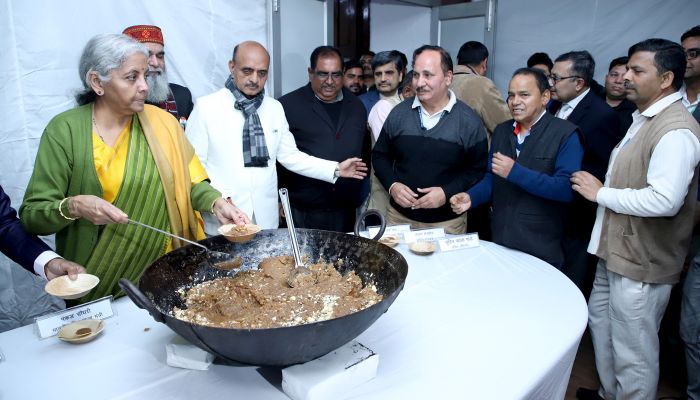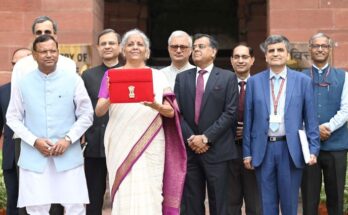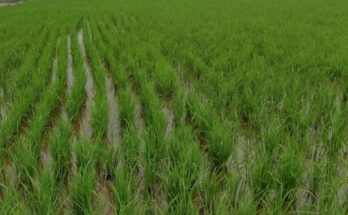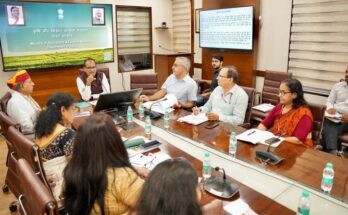Private investment in agriculture increased by 9.3 per cent in 2020-21, according to Economic Survey 2022-23, but given the challenges, the sector needs more. The Survey tabled in the Parliament on January 31, 2023, said that the sector has performed well but the sector needs “re-orientation” in the backdrop of certain challenges like adverse impacts of climate change and rising input costs. The other challenges include fragmented landholdings, sub-optimal farm mechanisation, low productivity, and disguised unemployment among others.
The performance of the agriculture sector remains critical to growth and employment in the country, the Survey said investment in the sector must be encouraged through an affordable, timely and inclusive approach to credit delivery.
You may also like to read: Yara India reaches 11.8 million farmers digitally; says its Sustainability Report

“As per the Economic Survey, the agriculture sector grew 4.6 per cent annually in the last 6 years. It is a very good sign. Key factors boosting the sector include higher MSP extended by the government. It is also attributed to growing agri-related credit, income support schemes, and insurance. We urge for the agri-related credit and income schemes to continue in the future too,” said, Kalyan Goswami, Director General, Agro Chem Federation of India (ACFI).
According to the Survey, the performance of the agriculture and allied sectors has been buoyant over the past several years, much of which is on account of the measures taken by the government to augment crop and livestock productivity, ensure certainty of returns to the farmers through price support, promote crop diversification, improve market infrastructure through the impetus provided for the setting up of farmer-producer organisations (FPOs) and promotion of investment in infrastructure facilities through the Agriculture Infrastructure Fund.
You may also like to read: Superfood brand Nourish You raises $2 million in Seed round
AIF has supported the creation of various agriculture infrastructures. Kisan Rail exclusively caters to the movement of perishable agri-horti commodities. The Cluster Development Programme (CDP) has promoted integrated and market-led development for horticulture clusters.

Commenting on the Economic Survey 2022-23, Anand Ramanathan, Partner, Deloitte India said, “Increase in foodgrain production, record agricultural exports, enhancement of MSP levels, focus on millets, oilseeds and pulses, greater coverage of crop insurance, increase in institutional credit and continued progress in e-procurement amongst various other highlights indicate that agribusiness continues to show strong potential for growth and enhancement of farmer livelihoods. The economic survey could have had more coverage from an agritech standpoint to address some of the key challenges from a yield, productivity and market linkages perspective.”
The agriculture sector grew by 3 per cent in 2021-22 compared to 3.3 per cent in 2020-21. The Survey said, in recent years, India has also rapidly emerged as the net exporter of agricultural products. During 2021-22, agricultural exports reached an all-time high of $50.2 billion. The Survey said this growth is partly attributable to good monsoon years and partly to the various reforms undertaken by the government to enhance agricultural productivity.

RG Agarwal, Chairman, Dhanuka Group, said, “Foodgrain production in the country has been rising continuously over the last few years. But in comparison to the developed as well as some of the developing nations including China, our average per acre production is much lower. Thus, there are a lot of scopes to enhance production further. For this, the government should further incentivise R&D activities and should encourage the adoption of newer technologies like drones. Also, the usage of quality agri-inputs including fertilisers and other agrochemicals in appropriate quality and right manner should be encouraged.”
Highlights of the Economic Survey 2022-23
- MSP for all mandated crops fixed at 1.5 times of all India weighted average cost of production since 2018
- Institutional credit to the agricultural sector continued to grow to 18.6 lakh crore in 2021-22
- Foodgrain production in India saw a sustained increase and stood at 315.7 million tonnes in 2021-22
- Free foodgrains to about 81.4 crore beneficiaries under the National Food Security Act for one year from January 1, 2023
- About 11.3 crore farmers were covered under the PM-Kisan scheme in its April-July 2022-23 payment cycle
- Rs 13,681 crores were sanctioned for post-harvest management and community farms under the Agriculture Infrastructure Fund
- Online, competitive, transparent bidding system with 1.74 crore farmers and 2.39 lakh traders put in place under the e-National Agriculture Market (e-NAM) scheme
- Organic farming is promoted through farmer producer organisations (FPO) under the Paramparagat Krishi Vikas Yojana (PKVY)
- India stands at the forefront to promote millets through the International Year of Millets (IYOM) 2023 initiative
- Support for creating a startup ecosystem in agriculture and allied sectors is also being provided to the farmers.




